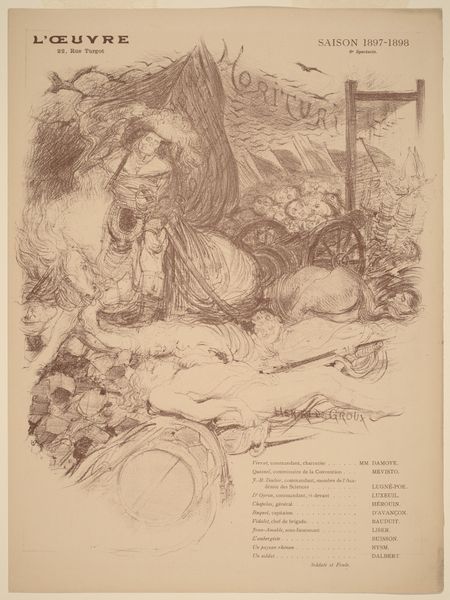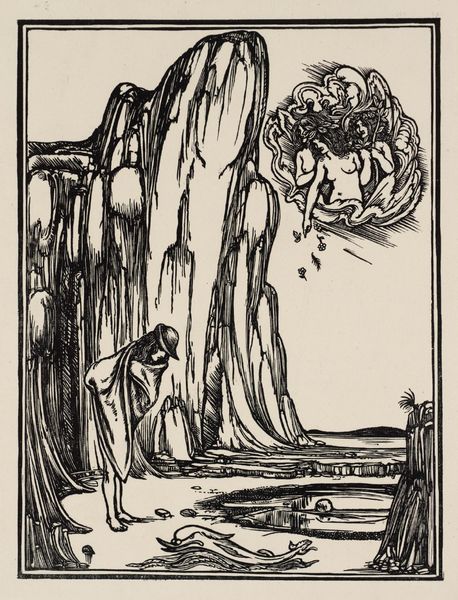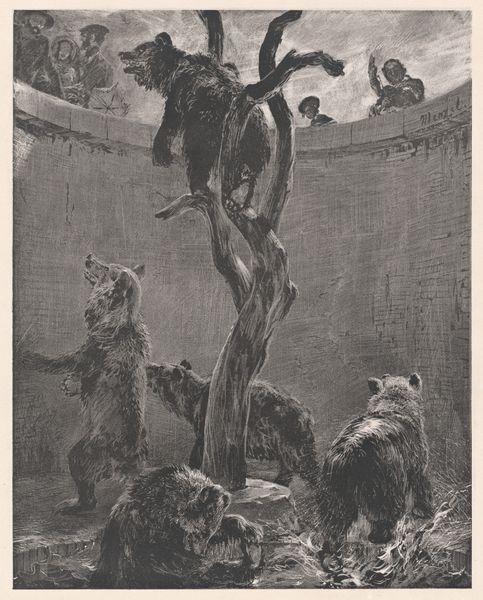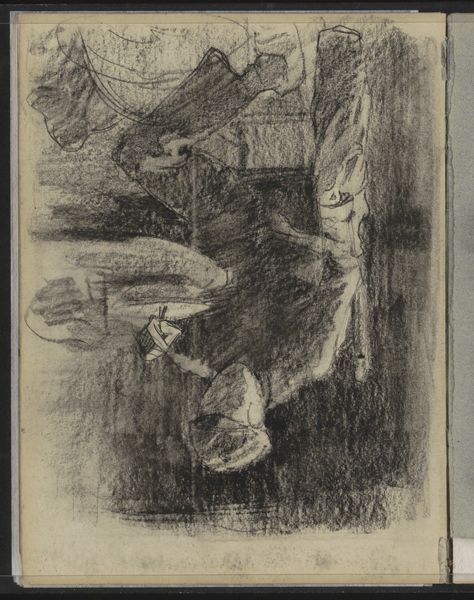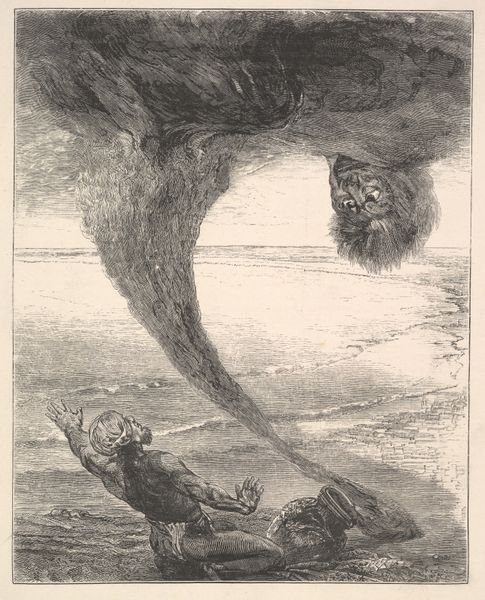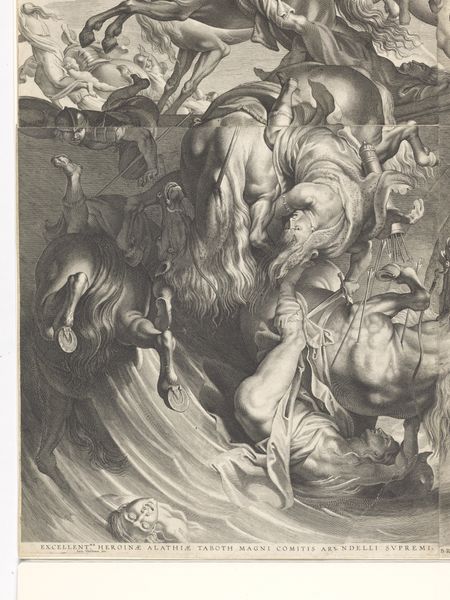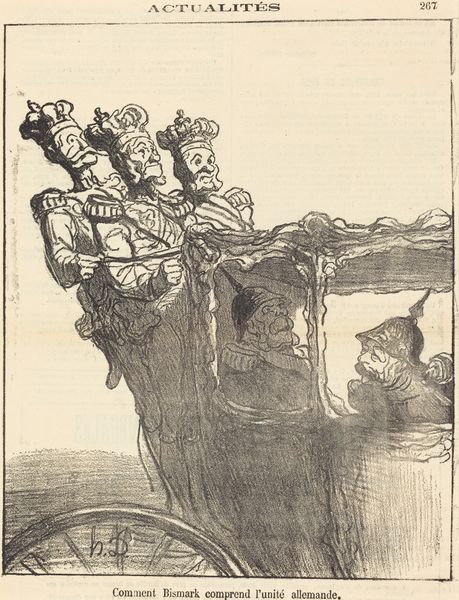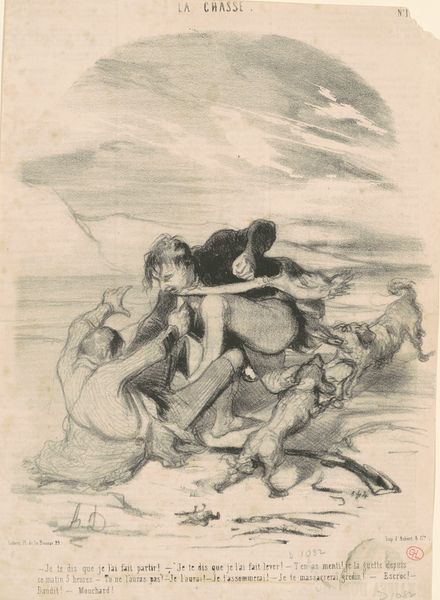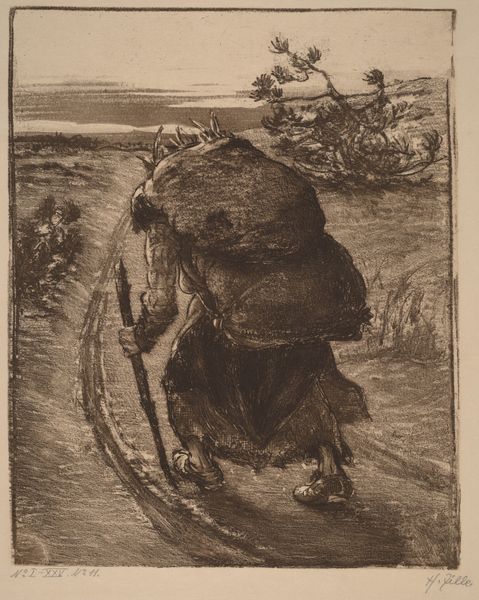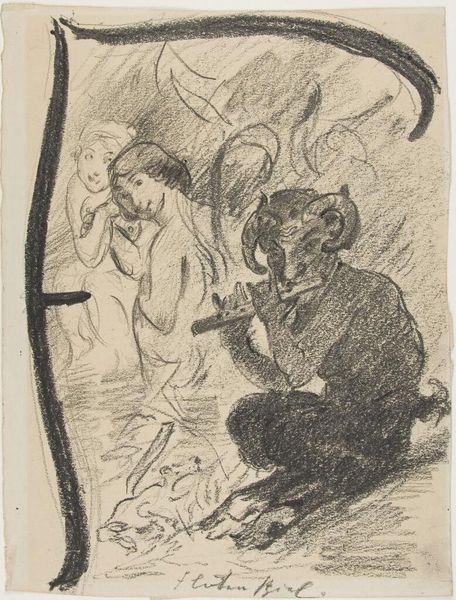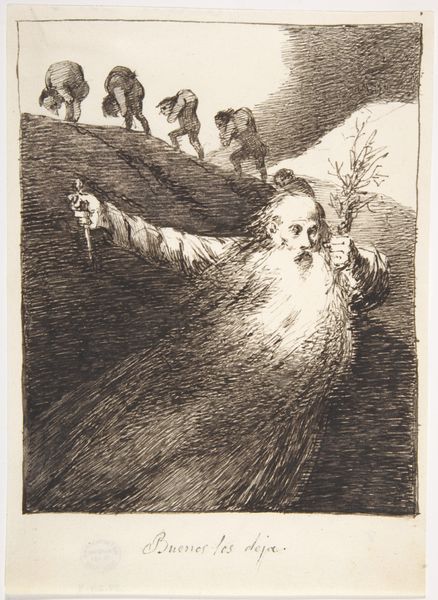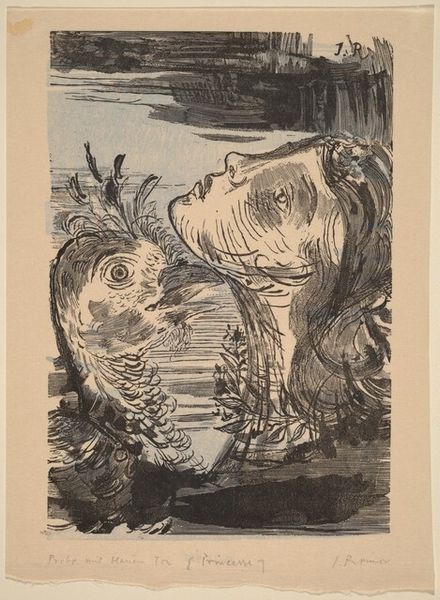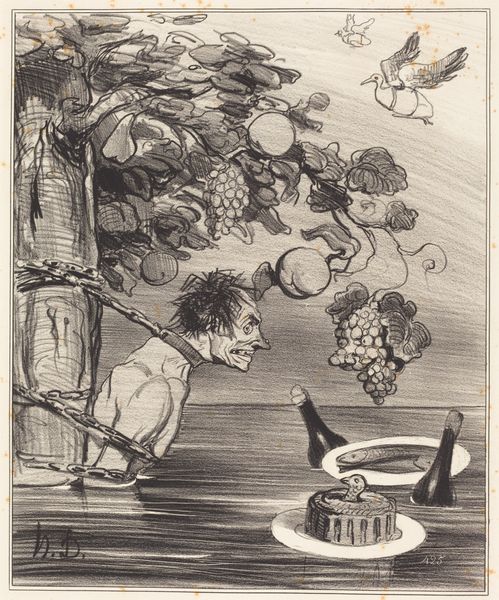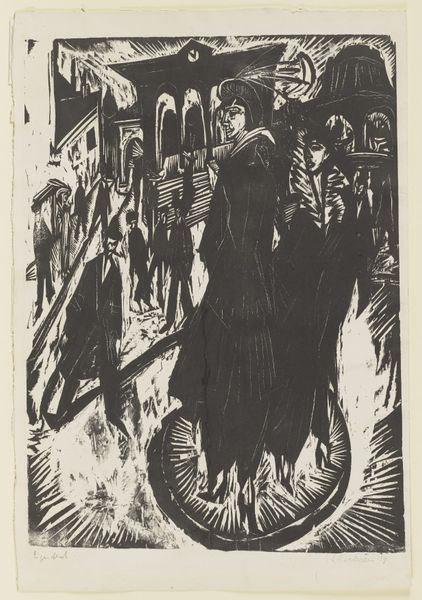
lithograph, print
#
lithograph
# print
#
caricature
#
figuration
#
romanticism
#
line
#
genre-painting
Copyright: National Gallery of Art: CC0 1.0
Editor: So, this is Honoré Daumier's lithograph, "Tiens Dorothée… Voila où m'a conduit…" from around the 19th century. It looks like a comedic scene, but there's something unsettling about the man’s exaggerated distress. How do you interpret this work? Curator: It's crucial to understand Daumier’s role as a social critic during a time of immense social change. He critiqued the bourgeoisie, not just for their habits, but for their values, or lack thereof. He also challenges the patriarchal structures prevalent then. Consider the woman – Dorothée – seemingly unaffected while the man is in obvious distress. What does that say about their power dynamic and societal expectations of women? Editor: It’s interesting you bring that up. I just thought she looked indifferent. Is he perhaps caught up in some sort of romantic entanglement that has gone awry? Curator: Exactly! It also subtly challenges the romantic ideal by presenting it in such an absurd light. Notice the "bons bourgeois" title. Irony is a powerful tool! This challenges the way women were idealised in Romanticism, reflecting how societal norms placed women in passive, supporting roles within relationships. Do you think Daumier truly meant to critique this social disparity? Editor: Absolutely! It's like he’s holding up a mirror to society’s hypocrisies through this ridiculous scene. It’s made me think differently about the power dynamics hidden within seemingly innocent narratives. Curator: Precisely. Seeing Daumier’s commentary gives a fascinating perspective, connecting the social context with visual storytelling in this work.
Comments
No comments
Be the first to comment and join the conversation on the ultimate creative platform.
